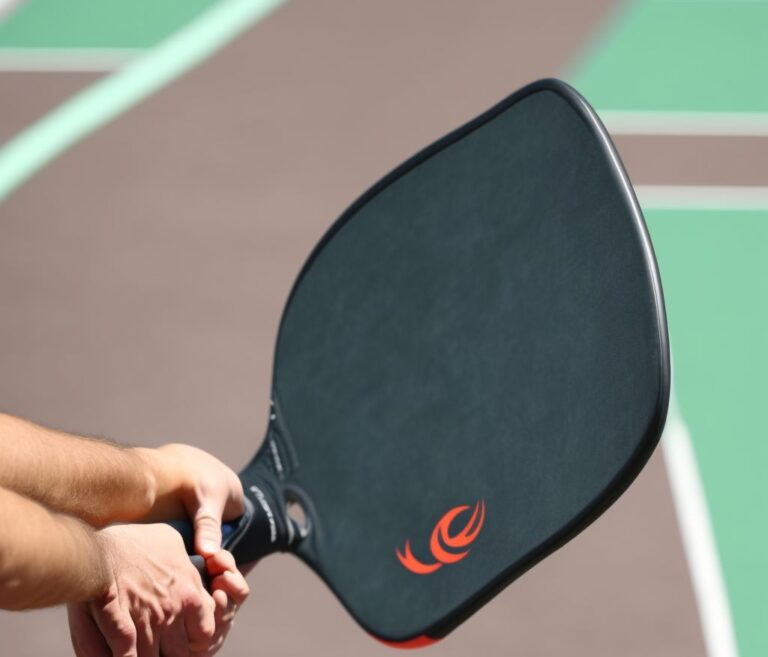
Are you looking to improve your reach and control on the court? An elongated pickleball paddle is longer and narrower than standard paddles, allowing players to reach farther and hit more precise shots.
Elongated paddles are much easier to control because of its narrower shape, letting players hit precise shots The longer length also helps players reach difficult shots that are farther away. However, elongated paddles isn’t for everyone. They are generally a little heavier than standard paddles and the narrow shape will take some getting used to. Not just that, some pickleball courts don’t even allow elongated paddles!
Overall, if you’re a player looking for an edge, an elongated pickleball paddle may be worth considering. Just be sure that using one is allowed in your court.
What are Elongated Paddles?
Elongated paddles are a longer and narrower variant of the standard pickleball paddle.
These paddles have a smaller, more concentrated sweet spot than standard paddles. This means that there’s a smaller area on the elongated paddle’s face where players can hit the ball with maximum power and accuracy. However, the smaller sweet spot is actually one of the best selling points for using an elongated paddle—we’ll explain more down below.
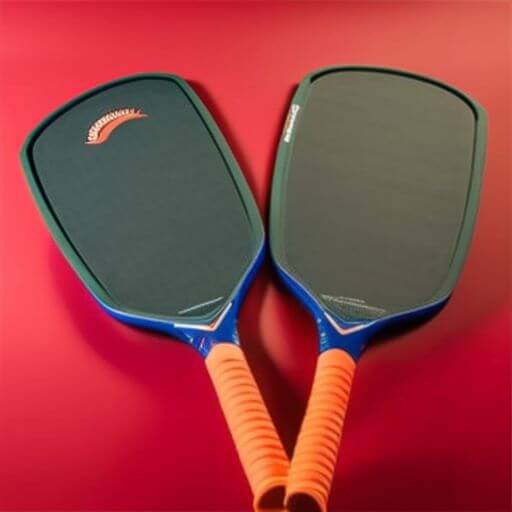
Overall, it’s a popular choice for intermediate to advanced pickleball players who want an edge in their game.
Dimensions of an Elongated Pickleball Paddle
The dimensions of an elongated pickleball paddle differ from manufacturer or brand. This is largely what makes elongated paddles prohibited to use in some courts, because of the reach disadvantage.
| Dimensions | Elongated Paddle | Traditional Paddle |
|---|---|---|
| Length | 16 to 18 inches | 15.5 inches |
| Width | 6.5 to 7.5 inches | 7.5 to 8.25 inches |
| Total Surface Area | ~113 to 148.5 square inches | ~92.81 to 160.31 square inches |
| Sweet Spot Surface Area | ~37.29 to 48.83 square inches | ~28.99 to 53.42 square inches |
Note: there is no formal study on calculating the sweet spot of pickleball paddles, the calculations above are 33% of the entire surface area.
The dimensions of these paddles are typically between 16-18 inches in length and 5-6 inches in width. Elongated paddles also come with a longer handle as well. Outside of just the regular dimensions, the thickness and weight also differs.
| Dimensions | Elongated Paddle | Traditional Paddle |
|---|---|---|
| Thickness | 0.4 to 0.7 inches | 0.5 to 0.6 inches |
| Weight | 7 to 9 ounces | 6 to 9 ounces |
Advantages of Using Elongated Paddles
Elongated paddles offer several advantages over traditional pickleball paddles.
Firstly, they increase the reach for players, allowing players to hit the ball from a little further. This can be especially helpful when returning a fast-moving ball where a few inches is all the difference.
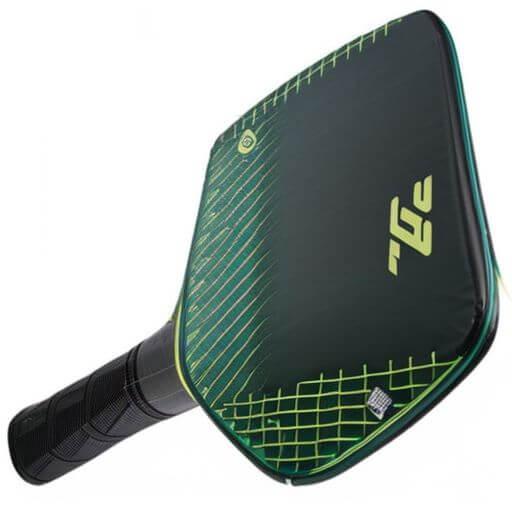
The sweet spot is a sport terminology for a specific area on a piece of equipment where the maximum power and control happens. Equipment like tennis racquets, baseball bats, golf clubs, and so on have these sweet spots.
Elongated paddles have a smaller sweet spot than traditional paddles. But, because the area is smaller, if the player is precise enough to hit the ball on the sweet spot, the stroke is much stronger and more precise than traditional paddles. This is how intermediate to professional players get an edge in strategic gameplay and raw performance. It’s also one of the reasons why elongated paddles can be prohibited for use in some courts.
All in all, elongated paddles are stronger and more precise, but you need to be a good player to take advantage of its strengths.
How Many People Use Elongated Paddles?
When it comes to the number of people who use elongated paddles in pickleball, there is no exact figure available. However, it is safe to say that the use of elongated paddles is gaining traction among players of all levels. As more players discover the advantages of using these paddles. It makes sense to assume that their usage will continue to increase in the future.
Choosing the Right Elongated Paddle
There are several types of elongated paddles that are just as diverse as traditional paddles. Here are some key considerations for finding the right elongated paddle for you:
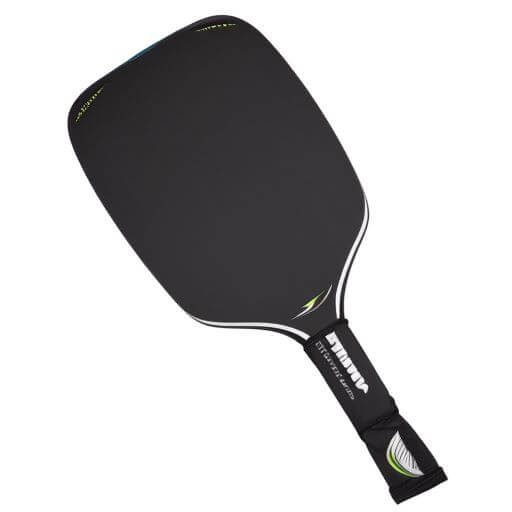
Figure out Your Playing Style
Before purchasing an elongated paddle, you should consider your playing style.
If you’re an aggressive player who likes to play hard, powerful shots, then a heavier paddle is your best friend. On the other hand, if you’re the type to practice technique and fancy shots like dinks, then a lighter, more agile paddle will suit you better.
Weight and Balance of Paddles
Heavier paddles, you guessed it, hit harder and farther. This comes at the expense of wrist dexterity, which is how fast you can create micro adjustments with your wrist. You’ll also tire much quicker.
On the other hand, lighter paddles are easier to control and because of that—much more precise.
You should find the right balance for your playing style and physical capabilities.
Grip Size and Comfort
Outside of weight and balance, there’s also the grip size that’s essential to get right. A grip that’s too small for your hands will lead to earlier fatigue. A larger grip will decrease your control.
Finding a grip size that is comfortable and allows you to maintain a firm grip is critical. You can also enhance your grip by using pickleball gloves.
Underrated: Edge Guard and Durability
Lastly, an underrated factor to consider when buying either a traditional or elongated paddle is the edge. Edge guards protect the edges of your paddle from falls and when it hits other hard surfaces. Once an edge breaks or starts to chip, the rate of damage usually quickens from there. So, protecting your paddles from the initial edge damage is crucial for a long-lasting paddle.
Maintenance and Care of Elongated Paddles
To ensure that your elongated paddles remain in top condition and provide the best performance, it’s important to take care of them properly. Here are some tips on how to maintain and care for your elongated paddles:
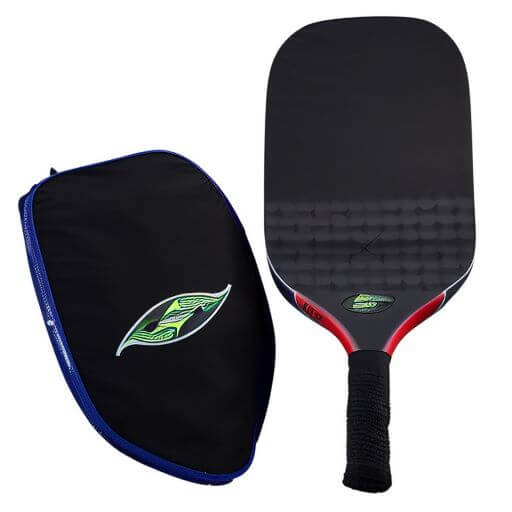
Cleaning and Storing the Paddles
After each game, it’s important to clean your elongated paddles to prevent dirt and sweat from building up. You can use a damp cloth or towel to wipe down the surface of the paddle. Avoid using harsh chemicals or abrasive materials that can damage the paddle’s surface. Once you’ve cleaned the paddle, store it in a dry and cool place to prevent warping or cracking.
Repairing Minor Damages
Over time, your elongated paddle may experience minor damage such as scratches or dents. These damages can affect the paddle’s performance, so it’s important to repair them as soon as possible. You can repair edges using super glue, replace the grips every so often, and report cracked handles with epoxy or glue.
There are a bunch of guides out there for all sorts of issues, so a quick Google search is your best friend.
Importance of Maintaining the Paddles
Proper maintenance of your elongated paddles not only ensures that they perform well, but also extends their lifespan. Regular cleaning and storage can prevent damage from occurring and prolong the paddle’s use. And, taking care of your paddles also saves you money in the long run as you won’t need to replace them as often.
Top Brands and Models of Elongated Paddles
If you’re in the market for an elongated pickleball paddle, you might be wondering what brands and models are the best. To help you out, we’ve put together a list of some of the top brands and models of elongated paddles. We’ve gathered reviews and features of the most popular brands and taken into account customer feedback and ratings.
First on the list is the Selkirk Amped Epic, which has been touted as one of the best-elongated paddles on the market. It features a large sweet spot and is designed for players who want to add power to their shots. Another top brand is Engage, with their Poach Advantage paddle which is known for its spin and control.
The Onix Evoke Pro and the Paddletek Phoenix Pro are also popular choices. Both offer a good mix of power and control. The Gamma Mirage is another top model that has been gaining popularity recently due to its unique design and comfortable grip.
Elongated Paddles vs Traditional Paddles: Which One to Choose?
Elongated paddles and traditional paddles are two different types of paddles used in the game of pickleball. Each of them has its own set of advantages and disadvantages. So, which one should you choose? Here’s a comparison of both types of paddles to help you make an informed decision.
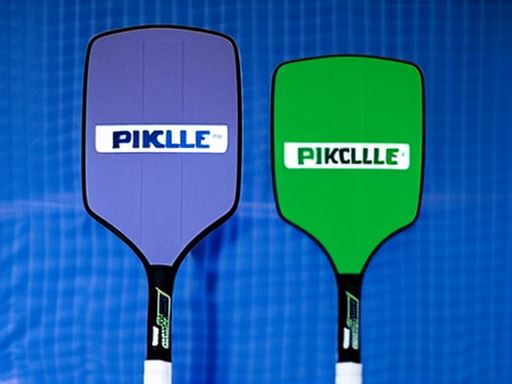
When it comes to features, elongated paddles have a larger hitting surface than traditional paddles, providing a longer reach and better coverage area. This allows players to hit shots that are farther away. However, elongated paddles also have a smaller sweet spot, which can make it harder to hit the ball correctly. If you do hit the ball in the small sweet spot, your shots will be stronger and more precise.
Traditional paddles are typically lighter and offer better control and maneuverability. They are better for players who prefer a more controlled and finesse-oriented style. However, they may not have the same power and reach as elongated paddles.
When choosing a paddle, consider factors such as your playing style, physical condition, and skill level. For instance, if you have a more aggressive playing style and like to hit strong shots, an elongated paddle should be the better option. If you prefer a more controlled and finesse-oriented style, a traditional paddle is more suitable.
In terms of pros and cons, elongated paddles are better for players who are looking for a larger hitting surface and more power. They are also beneficial for those who have issues with their arms and shoulders. However, elongated paddles may not provide the same level of control and accuracy as traditional paddles.
Ultimately, the decision comes down to personal preference and what works best for you. It’s a good idea to try out both types of paddles before making a final decision.